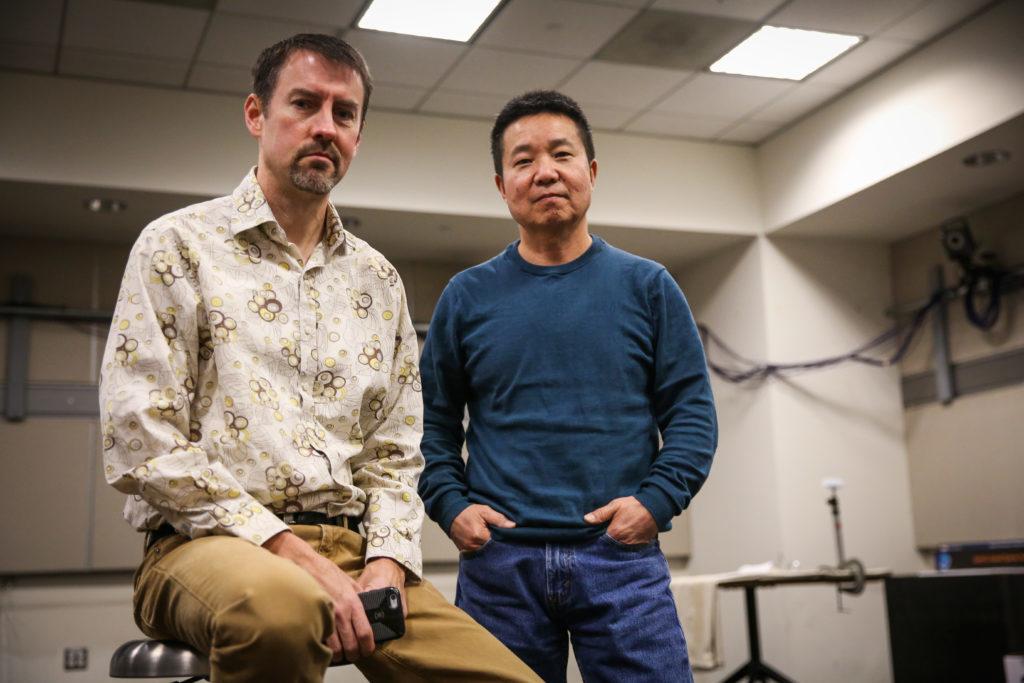Fifteen collaborative research projects among 43 faculty members have earned grants one year after the University introduced a new cross-disciplinary research fund, GW’s top research official said last month.
The Cross Disciplinary Research Fund, which replaced a fund that promoted work between centers and institute directors last year, now allows any faculty member working on interdisciplinary research to be eligible for a grant. Leo Chalupa, the vice president for research, said in an interview last month that the grants have incentivized researchers to work with faculty in other schools and start projects that have better chances of receiving more federal funding.
“We want to fund the best collaborative cross disciplinary research no matter if you are a discipline director or not,” he said. “Our hope would be that it’s going to promote breaking down those silos.”
We want to fund the best collaborative cross disciplinary research no matter if you are a discipline director or not.
The original fund was created in 2010 to help school directors receive outside grants and provide additional funding for researchers who weren’t able to get external funds, but it was converted into a new program focused more on collaboration.
Projects can be awarded up to $50,000 in funding from the grant, Chalupa said, and the average award in fiscal year 2017 was $44,178.
He said he anticipates a similar number of awards will be funded this fiscal year, and that his office is currently accepting applications.
“In virtually every school, for example, there are people in the law school working in cyber security there are people in the educational school working in autism.” Chalupa said. “To a large degree we have managed to smash these silos down and I think the faculty appreciate that.”
Officials in the research office have made several administrative changes since Chalupa arrived in 2009, including shifting staff into schools to work closer with researchers, while some researchers have turned to private funding and seek out international grants. Researchers earned an all-time high amount of funding last fall — a 135 percent increase from the same time the previous year.
In virtually every school, for example, there are people in the law school working in cyber security there are people in the educational school working in autism.
James Hahn, a professor of engineering and applied science, is working with John Philbeck, a professor of psychology, on one of the 40 projects that have gotten interdisciplinary funding. Their research is aiming to make the training of physicians for the newborn endotracheal intubation procedure, the placement of a plastic tube into the windpipe, more effective. Hahn said they are also working with a pediatrician at Children’s National Medical Center.
These kind of grants help researchers get their projects off the ground so they can then seek out more funding, he said.
“It’s very important, especially these days, if you want to get anything done, you have to get people from different disciplines working together,” Hahn said.
Philbeck said GW has incentivized interdisciplinary collaboration since he arrived at the University in 2000. He said it is helpful for researchers to have an additional incentive to partner with each other.
Already having a collaboration established makes researchers more competitive when applying for large grants, Philbeck said.
“One of the specific things they look at when reviewing grants is investigators and environment,” he said. “If you don’t have a multidisciplinary grant, you’re just not as competitive right off the bat.”
Stephen Mitroff, a professor of cognitive psychology, received a cross-disciplinary grant to work with Rachel Brem, the vice chair of radiology and director of the Breast Imaging and Intervention Center, on a project that combines cognitive psychology and radiology to evaluate breast cancer detection through 3-D imaging.
“The goal of this project is to merge our two worlds, to see if we can create a simplified version of mammography and tomosynthesis that anybody could do, so you don’t have to be a radiologist with years of training,” Mitroff said.
We wanted to get this project off the ground and see if we could get some data to apply for external funds, but in order to do it we needed help.
Mitroff, who started researching with Brem in November, said the funding helps research groups get their projects started, and then later receive external funding. He said that this fund is helping to pay for a postdoctoral student to work on the project’s preliminary research.
“We wanted to get this project off the ground and see if we could get some data to apply for external funds, but in order to do it we needed help.” Mitroff said. “Fifty percent of the criteria for getting the award was your likelihood of getting external funding.”
Lillianna Byington contributed reporting.





